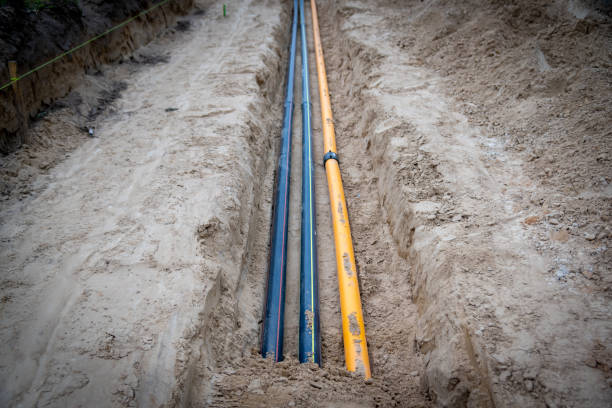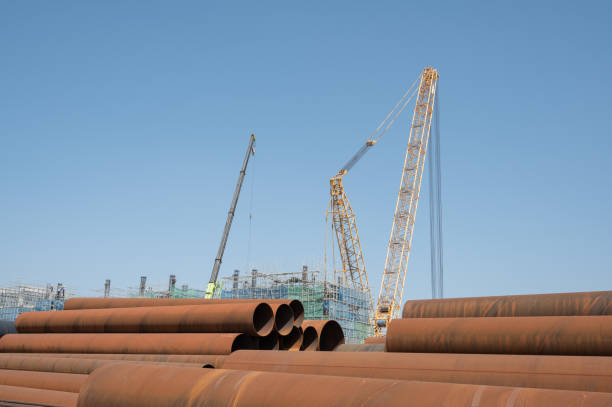The risk of a leak from the Nord Stream gas pipelines was estimated to be a one in 100,000 year event by the asset operator, official documents obtained by NCE reveal The pipelines that transport natural gas from Russia to Germany started to leak on Wednesday 28 September after explosions were detected near the Danish island of Bornholm in the Baltic Sea An official investigation is underway however the EU and Nato have suggested the pipelines were “sabotaged The official emergency repair plan drawn up in 2016 by Nord Stream operator Nord Stream AG – a joint venture between Gazprom, E.ON and BASF – concludes that damage to the pipeline would be “highly unlikely Owing to the high quality of the materials involved and the conservative design of the pipelines, damage and deformation are highly unlikely,” the Nord Stream Offshore Pipeline Repair Strategy document ad In fact, the probability of pipeline failure or leakage is as low as one damage event every 100,000 years. It adds that “pipeline repairs are not expected to be necessary during Nord Stream’s minimum operational lifespan of 50 years. Nord Stream 1, the first of two gas pipeline schemes between Russian and Europe, started to transport gas in November 2011 meaning the pipeline’s lifespan is coming up to 11 years, 39 off its expected minimum life expectancy.
The Second Pipeline – Nord Stream 2 – Which is Also Leaking, Has Not Started operation However Has Gas Stored within it.

The 1,200km pipeline was due to be turned on earlier this year however was blocked as a result of German government intervention in response to Russia’s invasion of Ukraine Each of the Nord Stream links consists of two pipelines, one going in either director between the continents. Three out of the four pipelines are reportedly leaking According to the strategy, Nord Stream AG will now enact its Emergency Pipeline Repair System (EPRS), designed by Subsea 7. Within the plan, Nord Stream AG states that it is “ready for any situation” and its contractors are “ready to act” in the event of a leak It adds: The main repair contractor together with Nord Stream’s own in-house technical specialist support has conducted significant levels of detailed engineering to develop the necessary operational procedures and definition of equipment needs to ensure that in the event of an incident. Another significant element of the Nord Stream Repair Strategy is its membership to the Statoil administered Pipeline Repair and Subsea Intervention (PRSI) Pool, which also includes Equinor. Through the membership, Nord Stream has access to a range of specialized services and equipment technically suited for performing large diameter subsea repairs.
Nord Stream’s Repair Strategy States In The Event of a Significant incident Resulting in Damage or Complete Bireach of The Pipeline integrity.
the mobilisation of suitable equipment and primary vessel spread such as a pipe laying vessel capable to handle a 48” [1.2m] diameter pipeline of Nord Stream characteristics and other essential vessel spread such as DP Class Diving Support and Subsea Construction Vessels would be critical to ensure the effective implementation of the procedures to repair the pipeline system.The appointment of a MRC and the membership to the Statoil administered PRSI Pool are considered to be highly robust and practical ways to ensure effective response and management of a repair operation, with access to the best available resources in the shortest possible time, the report concludes. The report adds that Nord Stream AG also has two warehouses, one in Germany and one in Russia, filled with replacement pipes The two Nord Stream pipelines export the gas from Portovaya Bay, near Vyborg in Russia, crossing the Gulf of Finland and the Baltic Sea, up to a landfall at Greifswald in Germany.

Total Capacity of The Two Pipelines is 55bn Cubic Metres a Year.
Both pipelines run almost parallel through the Baltic Sea, where the offshore section has a total length of approximately 1,224km each The pipe itself has two layers; the inner pipe steel which is between 27-41mm thick with antifriction coating and a concrete steel outer coating between 60-110mm thick with corrosion protection Current damage done to the pipes has been said to have ruptured both layers and in turn leaked anywhere between 15M cubic meters to 500M cubic meters of methane into the Baltic Sea. One of the Nord Stream 2 pipelines was not damaged as part of the explosions but the other was, and although it wasn’t actually in use, it was filled with 177M cubic meters of gas last year in preparation The Nord Stream 2 plans have long been criticised by the US who argue that it increases Europe’s reliance on Russian energy supplies. In 2018, the European Parliament also condemned the project as a risk to “European energy security” in a vote on a resolution calling for the project to be cancelled.


Recent Comments